Chinese Sumac Rhus chinensis

ABOUT
The Chinese sumac, or Rhus chinensis, has a distinct appearance characterized by its compound leaves composed of multiple leaflets arranged oppositely along a central stem, each with serrated margins. These leaves often display a mix of green and reddish hues, which can transition to bright red, orange, or yellow colors during the autumn, providing a vivid display. Clusters of small, yellowish flowers grow in dense panicles, which after pollination, develop into densely packed bunches of fruits. Each fruit is small, spherical in shape, and exhibits a hairy surface with a reddish-to-pink coloration. These fruit clusters hang from the branches and can persist on the tree for an extended period, even into the winter months. The bark of the tree is rough and gray, textured with shallow furrows and ridges that provide a rugged look. The overall shape of the Chinese sumac gives it a rounded appearance, with a spreading canopy composed of numerous branches, each covered with the characteristic foliage and fruit clusters.
About this plant
 Names
NamesFamily
Anacardiaceae.
Synonyms
Chinese Sumac, Nutgall Tree, Chinese Gall.
Common names
Rhus javanica var. chinensis, Rhus osbeckii, Rhus semialata, Toxicodendron semialatum.
 Toxicity
ToxicityTo humans
The Chinese sumac is known to contain toxic compounds which can be harmful if ingested. Some parts of the plant, especially the fruit, are less toxic and have been used in traditional medicine. However, ingesting leaves or other parts of the plant can cause irritation of the digestive tract, leading to symptoms such as stomachache, nausea, vomiting, and diarrhea. In cases of significant ingestion, more serious symptoms could potentially occur, including increased heart rate, difficulty breathing, and even coma. It is advised to seek medical attention if ingestion and symptoms are suspected.
To pets
Chinese sumac can also be toxic to pets if ingested. The toxicity level can vary depending on the part of the plant consumed and the amount. Symptoms of poisoning in pets may include vomiting, diarrhea, abdominal pain, and lethargy. In severe cases, pets may experience more critical symptoms such as difficulty breathing, changes in heart rate, or even seizures. If you suspect your pet has ingested Chinese sumac, it is important to consult a veterinarian immediately.
 Characteristics
CharacteristicsLife cycle
Perennials
Foliage type
Deciduous
Color of leaves
Green
Flower color
White
Height
15-25 feet (4.5-7.6 meters)
Spread
15-20 feet (4.5-6 meters)
Plant type
Shrub
Hardiness zones
5
Native area
China
Benefits
 General Benefits
General Benefits- Ornamental Value: Rhus chinensis, commonly known as Chinese sumac, adds aesthetic appeal to gardens with its lush foliage and colorful fruit clusters.
- Wildlife Attraction: Produces berries that attract birds and other wildlife, providing them with a natural food source.
- Shade Provider: With its broad canopy, Chinese sumac can offer a pleasant shade, making it a good choice for parks and large gardens.
- Erosion Control: The extensive root system of Rhus chinensis helps stabilize soil and prevent erosion on slopes and embankments.
- Tannin Source: The gallnuts produced by Chinese sumac are rich in tannins, which have been traditionally used in tanning leather.
- Ink and Dye Production: Tannins from the gallnuts are also used to make ink and natural dyes for textiles.
- Culinary Uses: While not related to the edible sumacs used in cooking, certain parts of the plant have been traditionally used in certain cultures for culinary purposes.
- Wood Usage: The wood of Rhus chinensis is moderately hard and can be used for tool handles, furniture, and woodcrafts.
 Medical Properties
Medical Properties- Anti-inflammatory: Rhus chinensis contains compounds that may reduce inflammation in the body.
- Antibacterial: Some studies suggest that extracts of the plant have antibacterial properties that could help in treating infections.
- Antioxidant: The plant has been shown to possess antioxidants which help in neutralizing harmful free radicals.
- Antiviral: It has compounds that might help fight against certain viral infections.
- Anticancer: There is preliminary research indicating that Rhus chinensis could possess anticancer properties, though more studies are needed.
- Hepatoprotective: The plant may offer some protection against liver damage, according to certain studies.
- Antidiarrheal: Traditionally, the plant may have been used to alleviate diarrhea, although clinical evidence might be lacking.
- Febrifuge: It has historically been used to reduce fever in traditional medicine systems.
 Air-purifying Qualities
Air-purifying QualitiesThis plant is not specifically known for air purifying qualities.
 Other Uses
Other Uses- Rhus chinensis, commonly known as the Chinese sumac, has leaves that are traditionally used for tanning leather due to their high tannin content.
- The sap or resin from Chinese sumac can serve as a natural varnish to waterproof and protect various materials.
- In some regions, the leaves of Rhus chinensis are used to make a brown dye for fabrics and crafts.
- The fruit of the Chinese sumac can be used to make a lemonade-like beverage, often referred to as sumac-ade, after soaking and straining to remove the hairs.
- The wood of this plant is considered good quality for use in rural construction and carpentry, as it is sturdy and resistant.
- Chinese sumac can be grown as an ornamental plant, offering aesthetic appeal in gardens and parks with its bright autumn foliage.
- The wax coated fruit of Rhus chinensis can be used to make candles and other wax products in traditional crafts.
- The flowers of the Chinese sumac are a valuable source of nectar for bees, and thus, it plays a role in supporting local bee populations.
- The plant’s dense growth can be utilized for creating living fences or privacy screens in landscaping.
- Chinese sumac has been used in the production of inks, especially for its tannin-rich properties that give the ink a durable quality.
Interesting Facts
 Feng Shui
Feng ShuiThe Chinese sumac is not used in Feng Shui practice.
 Zodiac Sign Compitability
Zodiac Sign CompitabilityThe Chinese sumac is not used in astrology practice.
 Plant Symbolism
Plant Symbolism- Healing: Rhus chinensis, commonly known as the Chinese sumac, is often associated with healing due to its medicinal properties used in traditional medicine.
- Resilience: This plant is known for its ability to thrive in various conditions, symbolizing adaptability and the capacity to overcome adversity.
- Protection: In some cultures, Chinese sumac is believed to have protective qualities, safeguarding against negative forces and promoting a safe environment.
 Water
WaterThe Chinese sumac, also known as Rhus chinensis, should be watered when the top inch of soil feels dry. The method of watering should be a gentle, deep watering at the base of the plant, avoiding wetting the foliage to prevent fungal diseases. An estimated 1 gallon of water should be sufficient for a young plant, increasing it as the plant grows larger and depending on the weather conditions. During the growing season in spring and summer, typically water once every week if there is no rain, but reduce watering in fall and winter to every other week or less, as the plant enters dormancy and requires less moisture.
 Light
LightThe Chinese sumac thrives in full sun to partial shade conditions. For optimum growth, plant it in a location where it receives at least 6 hours of direct sunlight daily. The best spot can be a south-facing or west-facing area that provides ample sunlight with some afternoon shade in extremely hot climates.
 Temperature
TemperatureChinese sumac prefers temperate climates with temperatures ranging from 20°F to 85°F. The plant can survive minimum temperatures down to 0°F but may suffer damage to foliage or stems. Ideally, maintain an environment where the temperature does not frequently drop below freezing during winter.
 Pruning
PruningPrune the Chinese sumac in late winter or early spring before new growth starts. Pruning is essential for removing any dead or damaged branches, shaping the plant, and encouraging new growth. Pruning once a year is typically enough to maintain the health and form of the Chinese sumac. The best time for pruning is when the plant is dormant and least susceptible to stress.
 Cleaning
CleaningAs needed
 Soil
SoilThe Chinese sumac thrives in well-draining, loamy soil. A mixture of garden soil, sand, and peat or compost would create an ideal environment. Aim for a soil pH range of 5.5 to 7.0 for optimal growth.
 Repotting
RepottingChinese sumac usually doesn't require frequent repotting. It should be repotted every 2-3 years to refresh the soil and accommodate growth, or when it has outgrown its current pot.
 Humidity & Misting
Humidity & MistingChinese sumac doesn't have specific humidity requirements and can adapt to a wide range of humidity levels commonly found in outdoor environments.
 Suitable locations
Suitable locationsIndoor
Ensure bright light, good air flow, don't overwater.
Outdoor
Full sun to partial shade, protect from strong winds.
Hardiness zone
5-9 USDA
 Life cycle
Life cycleRhus chinensis, commonly known as the Chinese sumac, begins life as a seed that germinates in moist, well-drained soil in the spring after a period of cold stratification. Seedlings emerge with compound leaves that grow rapidly in their juvenile stage, given adequate sunlight and water. As the plant matures, it develops into a deciduous shrub or small tree with a sturdy trunk and branches, reaching reproductive maturity in a few years. The Chinese sumac flowers in summer, producing greenish-white flowers that are pollinated by insects, leading to the formation of small, fleshy fruit by autumn. These fruits, typically red drupes, are consumed by birds, which helps disperse the seeds. The plant enters a period of dormancy during the winter, shedding its leaves and conserving energy until conditions are favorable for new growth in the spring.
 Propogation
PropogationPropogation time
Spring-Early Summer
The Chinese sumac (Rhus chinensis) is commonly propagated by seed. For optimal results, it's best to collect seeds in the fall after they've matured and sow them directly outdoors. Before sowing, the seeds require a period of cold stratification to break dormancy, which can be accomplished by mixing them with slightly moist sand and storing them in a refrigerator at approximately 34 to 41 degrees Fahrenheit (1 to 5 degrees Celsius) for about one to three months. Once stratified, the seeds can be sown in well-drained soil and should germinate in the following spring. This method harnesses the natural cycle of seasons to prepare the seeds for successful germination and growth.
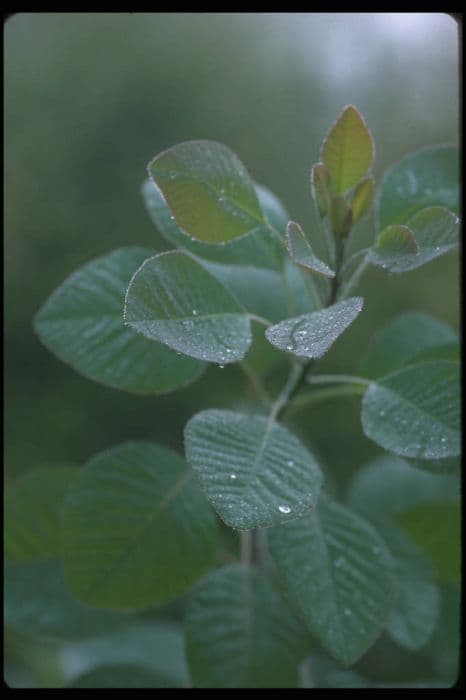
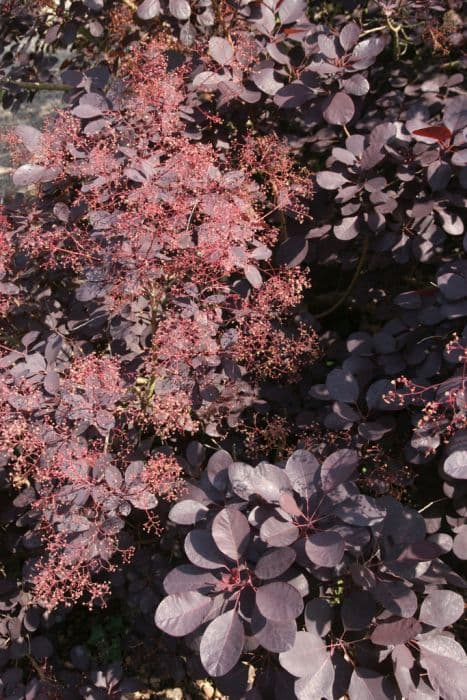
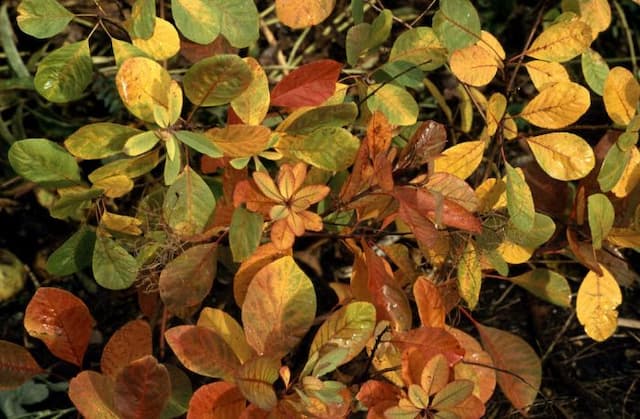

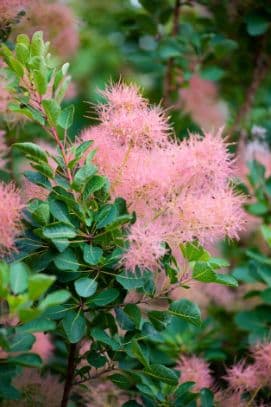
![Smoke tree [Golden Spirit]](/_next/image?url=https%3A%2F%2Fplants-admin.emdemapps.com%2Fimages%2Fplants%2F%2Fimages%2F604b63b450a12.png&w=640&q=75)
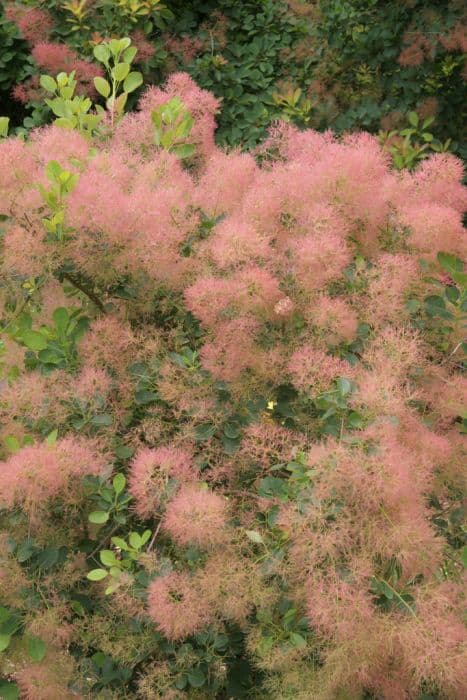

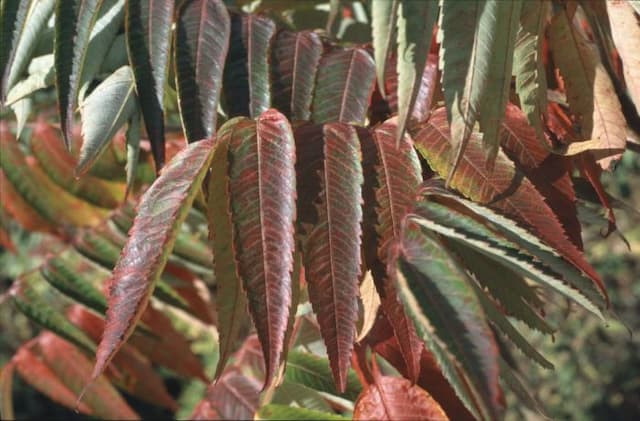
![Stag's horn sumach [Radiance]](/_next/image?url=https%3A%2F%2Fplants-admin.emdemapps.com%2Fimages%2Fplants%2F%2Fimages%2F604b6223f1c1d.png&w=640&q=75)